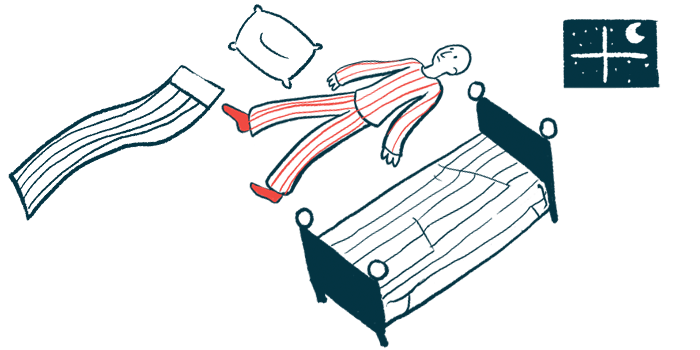Poor Sleep Seems to Worsen Parkinson’s Symptoms
Written by |

Poor quality of sleep is linked to worse motor and nonmotor symptoms in people with Parkinson’s disease, a study has found.
Greater deviations from an estimated ideal bedtime, time in bed, and duration of sleep are linked to more severe symptoms, data show.
“Sleep disorders have a significant effect on the burden of [Parkinson’s] symptoms. The current findings provide new insights into the monitoring and management of sleep and [Parkinson’s] and need to be further explored in the future studies, ” the researchers wrote.
The study, “Worse Sleep Quality Aggravates the Motor and Non-Motor Symptoms in Parkinson’s Disease,” was published in Frontiers in Aging Neuroscience.
Sleep problems, including insomnia, nightmares and restless sleep, are common nonmotor symptoms of Parkinson’s that can influence life quality significantly. It has been reported that sleep disturbances sometimes occur years before a Parkinson’s diagnosis, when the hallmark motor symptoms of the neurodegenerative disease emerge.
Researchers in China aimed to investigate the relationship between sleep characteristics and other Parkinson’s symptoms among 328 Parkinson’s patients seen at their clinic from October 2014 to October 2o21. The mean age of patients was 60.5, and 145 were women.
Participants completed the Pittsburgh Sleep Quality Index (PSQI), a self-reported questionnaire relating to sleep quality, and then were categorized as having poor, general, or good sleep.
Among the group, 99 had good sleep, 147 had general sleep, and sleep was poor in 82 participants.
Overall, poor sleep, reflected by higher PSQI scores, was associated significantly with more severe motor symptoms, as measured by the Hoehn and Yahr scale, the freezing of gait questionnaire (FOG-Q) and the Movement Disorder Society-Unified Parkinson’s Disease Rating Scale Part 2 (MDS-UPDRS-II).
Nonmotor symptom burden, as measured by the MDS-UPDRS Part 1 and the Non-Motor Symptoms Scale (NMSS), also was linked to worse sleep, as were measures of several specific nonmotor symptoms, including cognitive function, depression, anxiety, life quality, autonomic dysfunction, apathy and fatigue.
Required doses of levodopa, or similar antiparkinsonian medications, were higher among those with worse sleep. Specific sleep components, such as sleep quality, duration, disturbances, daytime dysfunction, and use of sleep medications, were linked similarly to some motor and nonmotor symptoms.
Investigating further, the researchers found the ideal bedtime was about 9:52 p.m., with greater deviations from that time associated with worse MDS-UPDRS-II scores, which reflect activities of daily life such as speech, handwriting or walking,
Further, the optimal time in bed was determined to be about 8–9.2 hours, with both insufficient and excessive times linked to a higher burden of nonmotor symptoms. With regard to actual sleep duration, 6–7 hours per day was found to be optimal.
Various nonmotor symptoms were shown to influence the relationship between sleep, life quality and Parkinson’s severity, with the strongest relationships observed for anxiety, depression, and overall nonmotor symptom burden.
The team noted that both nerve cell changes in the brain and Parkinson’s symptoms themselves might contribute to sleep changes for Parkinson’s patients, adding that it may be “more difficult, but important, for them to obtain sufficient sleep.”
Overall, the findings provide “new insights for clinical practice to intervene in [Parkinson’s] deterioration with sleep disorders,” the researchers wrote, adding that the data also “highlight the importance of increasing the awareness of sleep problems in patients with [Parkinson’s].”
“The treatment of sleep problems will likely improve [nonmotor symptoms] but also postpone [Parkinson’s] progression. It can potentially reduce the overall disability and thereby improve the lives of patients and their caregivers,” the team concluded.
Future longitudinal studies will be needed to to further support the relationship between sleep disturbances and Parkinson’s symptoms, the researchers noted.






